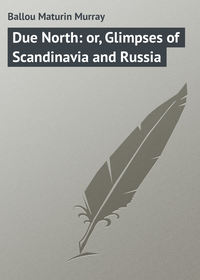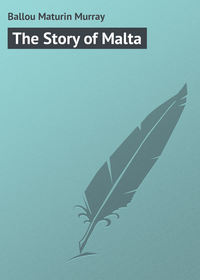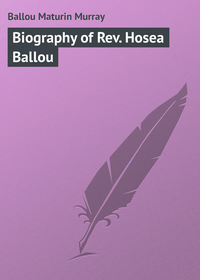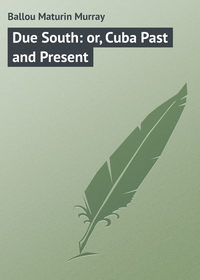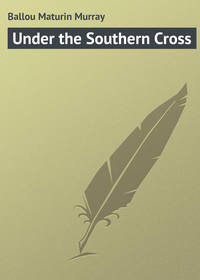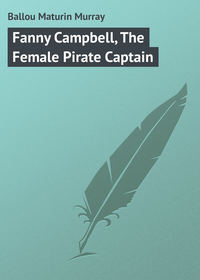 полная версия
полная версияFoot-prints of Travel: or, Journeyings in Many Lands
On drawing still nearer to the shore, flocks of pelicans are observed upon the rocks, and that most awkward of birds, the penguin, is seen in idle groups. He is a good swimmer, but his apologetic wings are not intended for flying.
We pass up the Tamar River, through a narrow, winding channel for a distance of forty miles before coming to the harbor and town of Launceston. The many tall, smoking chimney-shafts which meet the eye indicate that the town is busy smelting ores, dug from the neighboring mineral hills and valleys. It is a pleasant and thrifty little city, somewhat liable to earthquakes and their attendant inconveniencies. The place has a population of ten or twelve thousand, and is named after a town in Cornwall, England. We have left Australia proper far behind us, but the Bass Strait which separates that land from Tasmania is evidently of modern formation. The similarity of the vegetation, minerals, animal, and vegetable life of the two countries shows that this island must, at some time in the long-past ages, have been connected with the mainland. And yet the aborigines of Tasmania were a race quite distinct from those of Australia, so different, indeed, as only to resemble them in color. They were a well-formed, athletic people, with brilliant eyes, curly hair, flat noses, and elaborately tattooed bodies. This ingenious and barbaric ornamentation, practised by isolated savage races, seems to have been universal among the inhabitants of the Pacific Islands, though the great distances which separate them, as well as the lack of all ordinary means of intercommunication, would lead to the belief that they could not have borrowed the idea from one another. So late as 1828 there were a few of the Tasmanian aborigines still alive, but to-day there is not a representative of the race in existence.
When the country cast off the disgrace of being a penal colony, the name it bore was very judiciously changed from Van Dieman's Land to that of Tasmania, in honor of its first discoverer, Abel Janssen Tasman, the famous Dutch navigator of the seventeenth century. We should perhaps qualify the words "first discoverer." Tasman was the first accredited discoverer, but he was less entitled to impart his name to this beautiful island than were others. Captain Cook, with characteristic zeal and sagacity, explored, surveyed, and described it, whereas Tasman scarcely more than sighted it. However, any name was preferable to that of Van Dieman's Land, which had become the synonyme for a penal station, and with which is associated the memory of some of the most outrageous and murderous acts of cruelty for which a civilized government was ever responsible.
The whole island has now a population of about one hundred and thirty thousand, and a total area of over twenty-four thousand square miles. It is not quite so large as Ireland. Lying nearer to the Antarctic Circle it is of course cooler than the continent, but the influence of the sea, which completely surrounds it, renders the climate more equable. The general aspect of the country is that of being occupied by thrifty farmers of advanced ideas, such as carry on their calling understandingly, and more like well-populated America than sparsely-inhabited Australia. Our native fruits – apples, peaches, pears, and the like – thrive here in such abundance, as to form a prominent item in the exports, besides promoting a large and profitable industry in the packing of preserved fruits, which are in universal use in Australia and New Zealand. These canned fruits have an excellent and well-deserved reputation. Here, also, we find enormous trees, with a circumference of eighty feet near the ground, and a height of three hundred and fifty feet. Fern-trees, with their graceful palm-like formation, are frequently seen thirty feet in height. The country is well-wooded generally, and traversed by pleasant watercourses; it is singularly fertile, and rich in good harbors, especially upon the east coast. In short, its hills, forests, and plains afford a pleasing variety of scenery, while its rich pastures invite the stock-breeder to reap a goodly harvest in the easiest manner.
Launceston is situated at the head of navigation, on the Tamar, where the town nestles in the lap of a valley surrounded by high elevations. It is regularly laid out in broad streets, lighted by gas, and has a good water-supply brought from St. Patrick's River, fifteen miles east of the city. There are numerous substantial stone buildings, and everything bears a business-like aspect. There is a public library, and several free schools of each grade. The North and South Elk Rivers rise on different sides of Ben Lomond, and after flowing through some romantic plains and gorges, they join each other at Launceston. The sky-reaching mountain just named is worthy of its Scotch counterpart; between it and Launceston is some of the finest river and mountain scenery in all Tasmania. Ben Lomond is the chief object in the landscape, wherever one drives or walks in this part of the island. Tasmania possesses vast mineral wealth. The richest and most profitable tin mine in the world is that of Mount Bischoff, situated about a hundred and fifty miles from Launceston. The Beaconsfield gold mine is only thirty miles from the city, besides several others not much further away, which are rich in their yield of the precious metal.
The journey from here to Hobart, a distance of one hundred and twenty miles, takes us through the length of the island in a southeasterly direction. We pass through lovely glades, over broad plains, across rushing streams, and around the base of abrupt mountains. Hobart was so named in 1804, in honor of Lord Hobart, who was then Secretary of State for the Colonies. It is surrounded by hills and mountains except where the river Derwent opens into lake form, making a deep, well-sheltered harbor, whence it leads the way into the Southern Ocean. Among the lofty hills in this vicinity Mount Wellington towers forty-two hundred feet above the others, so close to the city as to appear to be within rifle range. The shape of the town is square, and it is built upon a succession of hills, very much like Sydney. It has broad streets intersecting each other at right angles, lined with handsome, well-stocked stores and dwelling-houses, serving an active and enterprising population of thirty thousand and more. Of these shops, two or three spacious and elegant bookstores deserve special mention, being such as would be creditable to any American city. It must undoubtedly be a cultured community which affords support to such establishments.
Yet we cannot forget that Hobart has scarcely outlived the curse of the penal association which encompassed its birth. Between thirty and forty years ago, the British government expended here five thousand dollars a day in support of jails and military barracks. The last convict ship from England discharged her cargo at Hobart in 1851, since which year the system has gradually disappeared. The city is supplied with all the necessary charitable and educational institutions, including a public library and art gallery. The street scenes have the usual local color, embracing the typical miner, with his rude kit upon his shoulder, consisting of a huge canvas bag, a shovel, and pick. The professional chimney-sweep, with blackened face and hands begrimed, – he whom we lost sight of in Boston years ago, – is here seen pursuing his antiquated vocation. Market-men have the same peculiar mode of delivering purchases to their customers that we have noticed elsewhere in this country, and are seen galloping about upon wiry little horses, bearing upon their arms large well-filled baskets. Women, with small handcarts full of slaughtered rabbits, cry them for sale at twelve cents a pair, besides which they receive a bounty for killing these pests.
The river Derwent, which rises far inland where the beautiful lakes St. Clair and Sorell are embosomed, broadens into a lake six miles wide where it forms the harbor of Hobart, and is famous for the regattas that are rowed upon its surface. Here, the largest craft that navigates these seas can lie close to the wharf and the warehouses. A visit to the Lake District of Tasmania affords many delightful views, where those inland waters just referred to lie in their lonely beauty, now overhung by towering cliffs, like those bordering a Norwegian arm of the sea, and now edged by pebbly beaches where choice agates and carnelians abound.
The charming cloud-effects which hang over and about the lofty hills which environ the capital of Tasmania, recall vividly those of the Lake of Geneva, near Chillon, while the Derwent itself, reflecting the hills upon its blue and placid surface, forms another pleasing resemblance to Lake Leman. In ascending Mount Wellington, the lion of Tasmanian scenery, when we find ourselves at an elevation of about two thousand feet, it is discovered that we have reached the Old World ocean-floor. Here, there are plenty of remains of the former denizens of the ocean, – fossils, telling the strange and interesting story of terrestrial changes that have taken place in the thousands upon thousands of years that are passed.
About twenty miles from Hobart we find a forest of the remarkable gum-trees of which we have all read, – trees which exceed in height and circumference the mammoth growths of our own Yosemite Valley, and fully equal those of Victoria. The immediate locality which contains them is known as the Huon District. A walk among these forest giants fills one with wonder and delight; their lofty tops seem almost lost in the sky to which they aspire. No church steeple, no cathedral pinnacle reared by the hand of man, but only mountain peaks reach so far skyward.
Tasmania is largely occupied for sheep-runs and wool-raising. The eastern side of the island is studded with lovely homesteads carefully fenced, the grounds about the residences being covered with fruit trees and flower plats. There does not appear to be any waste land, all is carefully improved in the peopled districts. The roads are often lined with thrifty hedges, symmetrically trimmed, frequently consisting of the brilliant, constant flowering, fragrant yellow gorse, and sometimes of the stocky species of scarlet geranium. This sort is not fragrant but becomes very thick by being cut partly down annually, until it makes an almost impenetrable hedge. Prosperity and good taste are everywhere noticeable, amid a succession of landscapes like those of the populous New England States.
CHAPTER VI
We embark at Hobart by steamship, for Southern New Zealand. After following the course of the river Derwent for a distance of twelve miles, its mouth is reached, where the ship's course is a little south of east, the dull green of the waters on soundings rapidly changing to the navy blue of the ocean. The prevailing winds here are from the west, which with the Australian current and the Antarctic drift, are in our favor, so the ship speeds cheerily on her way.
The tedium of the voyage is beguiled by watching the graceful movements of the wandering albatross, the fateful bird of nautical romance, which is sure to be seen in considerable numbers below the thirtieth parallel of south latitude. The peculiarities of this sea-bird's flight are a constant marvel, for it scarcely ever plies its wings, but literally sails upon the wind in any desired course. We wonder what secret power can so propel him for hundreds of rods with an upward trend at the close. If for a single moment he lights upon the water to seize some object of food, there is a trifling exertion evinced in rising again, until he is a few feet above the waves, when once more he sails with or against the wind, upon outspread, immovable wings. With no apparent inclination or occasion for pugnacity, the albatross is yet armed with a tremendous beak, certainly the most terrible of its kind possessed by any of the feathered tribe. It is from six to eight inches long, and ends in a sharp-pointed hook extremely strong and hard. It has been humorously said that if he pleased, the albatross might breakfast at the Cape of Good Hope and dine in New York, so wonderfully swift is he in flight and so powerful on the wing.
At night the phosphorescence of these lonely waters lying just north of the Antarctic Circle, between Tasmania and New Zealand, is indeed marvellous. Liquid fire is the only term which will properly express their flame-like appearance. If a bucketful is drawn and deposited upon deck, while it remains still it appears dark and like any other water, but when agitated it emits scintillations of light like the stars. A drop of this water placed under a microscope is found to be teeming with living and active creatures. If we suspend a muslin bag for a few moments over the ship's side, with the mouth open, then draw it up and permit it to drain for a few seconds, placing what remains in a glass tumbler, we shall find the abundance of living forms which it contains quite visible to the naked eye. No two of these minute creatures seem to be of similar form; the variety is infinite, and their activity incessant. Most of these animalcules, however, are so small that if it were not for the microscope we should never know of their existence.
The voyage from Hobart to the Bluff, South New Zealand, usually consumes four days, and it is often a very rough passage. Sailing-vessels making this trip carry a quantity of crude oil, which in extreme cases they employ to still the boisterous sea about them, when "God maketh the deep to boil like a pot." It should be known that our own Benjamin Franklin first suggested, about a century ago, the carrying of oil by vessels for this purpose. This shrewd American philosopher was also the first to suggest, about the same time, that ship-builders should construct the hulls of vessels in water-tight compartments, thus affording sufficient sustaining power to float them when by accident portions of the hull became leaky or broken into. After the lapse of a century both of these precautions have been adopted, and are much used.
As we sight the land, the southwest coast of New Zealand is found to be indented with deep fjords [Pronounced feords.] almost precisely like the coast of Norway from Bergen to Hammerfest; and, singular to say, these arms of the sea, like those of the far north, are much deeper than the neighboring ocean. The Bluff, also known as Campbelltown, is situated in the very track of storms, being open to the entire sweep of the Antarctic Ocean. Its shelving side, sloping towards the harbor, forms a sort of lee, or sheltered position, which is occupied by a pretty little fishing-village of some sixty houses, and contains a population of less than a thousand. These people gain their living mostly from the neighboring sea, and from such labor as is consequent upon the occasional arrival of a steamship bound northward. We may here take refreshment at the Golden Age Inn, which is the most southerly house of public entertainment on the globe.
New Zealand did not become a recognized British colony until the year 1840. For three-quarters of a century after Cook's first visit, the native tribes remained in free possession of the country. It is true that England was mistress of these islands by right of discovery, but she made no formal assumption of political domain until the period already named, when it was formed into a colony subordinate to the government of New South Wales. As early as 1815, white men of venturous disposition began to settle in small numbers among the natives; but often their fate was to be roasted and eaten by cannibals. Before 1820, missionaries, no doubt influenced by truly Christian motives, came hither and devoted their lives to this people, – in more senses than one, as it is well known that they not infrequently met with a fate similar to that of other settlers.
New Zealand lies as far south of the equator as Italy does north of it, and is divided into the North and South Islands by Cook's Strait. The South Island is also known as the Middle Island, to distinguish it more fully from Stewart Island, which belongs to the group, and which lies to the south of it. This last-named island is separated from Middle Island by Foveaux Strait some fifteen or twenty miles across the water from the Bluff. It is about fifty miles long by thirty broad, and has a mountain range running through it, the loftiest peak of which is a trifle over three thousand feet high. There are some fishing hamlets here, but there are very few inhabitants. All these islands are popularly believed to have once formed part of a great continent, which is now sunk in the sea.
Unlike Australia, New Zealand is rarely visited by drought. The whole eastern coast abounds in good harbors, while the rivers and streams are ever flowing and innumerable. Though it is a mountainous country, it differs from Switzerland in that it has no lack of extensive plains, which seem to have been left by nature ready to the hand of the farmer, requiring scarcely ordinary cultivation to insure large and profitable crops of grains. This diversity of surface, as well as the fact that these islands extend over thirteen degrees of latitude, give the country a varied climate, but it is a remarkably temperate one, its salubrity far surpassing that of England or any part of the United States. While snow is never seen in the North Island except upon the highest mountains, the plains of the South Island, as far south as Otago, are sometimes sprinkled with it, but only to disappear almost immediately. The rivers are generally destitute of fish, and the forests of game. It is no sportsman's country; but vegetation runs riot, the soil being remarkably fertile, clothing the wild lands with perpetual verdure and vigorous freshness.
The area of the islands known as New Zealand is about one hundred thousand square miles, being a few more than are contained in England, Wales, and Ireland combined. The entire coast line is four thousand miles in length. Out of the seventy million acres of land, forty million are deemed worthy of cultivation. The soil being light and easily worked favors the agriculturist, and New Zealand is free from all noxious animals and venomous reptiles. It is stated that no animal larger than a rat was found here by the discoverers. The remote situation of the country, surrounded by the greatest extent of ocean on the globe, has kept it in a measure unknown to the rest of the world, even in these days of rapid communication with all parts of the earth. Wellington, the capital, is about fifteen thousand miles more or less, from the Colonial Office in London; in other words, New Zealand forms the nearest land to the actual antipodes of England. The precious metals are distributed over the land in gold-bearing quartz reefs, rich alluvial diggings, and in the sands of its many rivers. Mines of tin and iron as well as other minerals are supplemented by an abundant supply of the most important of them all; namely, coal.
There is little of interest to detain us at the Bluff, so we continue on by steamer to Dunedin, the metropolis of Otago district, and indeed, the principal city of New Zealand, if we make the number and wealth of its population the criterion of comparison. The cities of both Australia and New Zealand, but especially those of the latter country, have a habit of locating themselves among and upon a collection of hills, up the sides of which the houses creep in a very picturesque manner. Dunedin is no exception to this rule, rising rather abruptly from the plain, which is the location of the wharves and business houses, to the summit of the surrounding hills. A portion of the plain near the shore, upon which broad streets and substantial blocks of buildings now stand, consists of made land, redeemed at great expense from the shallow water front of the town.
The first settlement here was made so late as 1848, by a colony nearly every member of which came from Scotland, and from this source the city has continued ever since to draw large numbers annually. The Scottish brogue salutes the ear everywhere; the Scottish physiognomy is always prominent to the eye; and indeed, there are several prevailing indications which cause one to half believe himself in Aberdeen, Glasgow, or Edinburgh. This is by no means unpleasant. There is a solid, reliable appearance to everything. People are rosy-cheeked, hearty, and good to look at. The wand of the enchanter, to speak figuratively, touched the place in 1861, from which date it took a fresh start upon the road of prosperity. It was caused by gold being discovered in large quantities near at hand, and from that date the city of Dunedin has grown in population and wealth with marvellous rapidity. Large substantial stone edifices have sprung up on all the main thoroughfares devoted to business purposes, banks, public offices, churches, schools, storehouses, etc., giving an unmistakable aspect of prosperity. The street-cars are mostly operated on the cable principle. Horses could not draw heavily-laden cars up some of the steep streets. The sensation when being conveyed on one of these cars up or down a steep grade of the city, is the same as when ascending or descending some Swiss mountains, by means of the same unseen power. The car is promptly stopped anywhere, to land or to take on a passenger, no matter how steep the grade, by the simple movement of a lever, and is easily started again. The powerful stationary engine situated a mile away, by means of the chain beneath the road-bed quietly winds the car up the declivity however heavily it may be laden, without the least slacking of speed.
The singularly formed hills about Dunedin are not mere barren rocks, – they have their suggestiveness, speaking of volcanic eruptions, of wild upheavals, dating back for thousands of years. Scientists tell us that these islands are of the earliest rock formations. The ground upon which this city stands, like that of Auckland further north, is composed of the fiery outflow of volcanic matter.
Dunedin has all the usual educational and philanthropic institutions which a community of fifty thousand intelligent people demand in our day. It is especially well supplied with primary and other schools. Throughout New Zealand there are over eight hundred registered public schools of the various grades. It is a source of gratification to realize that educational interests are nowhere neglected in these far-away colonies, where the eager pursuit of gold has been so prominent an element in inducing immigration. New Zealand is nearly as rich in gold deposits as is Australia, and the precious metal is obtained under nearly the same conditions. Much gold has been found here in what are called pockets, under boulders and large stones which lie on the sandy beach of the west coast. This is popularly believed to have been washed up from the sea in heavy weather, but undoubtedly it was first washed down from the mountains and deposited along the shore. Official returns show that New Zealand has produced over two hundred and fifty million dollars in gold since its discovery in these islands.
When Captain Cook first landed here, he fully understood the cannibal habits of the native race, and sought for some practical means of discouraging and abolishing such inhuman practices. Upon his second visit, therefore, he introduced swine and some other domestic animals, such as goats and horned cattle, in the vain hope that they would ultimately supply sufficient animal food for the savages, and divert them from such wholesale roasting and eating of each other. The goats and some other animals were soon slaughtered and consumed, but the swine to a certain extent answered the purpose for which he designed them; that is to say, they ran wild, multiplied remarkably, and were hunted and eaten by the natives; but cannibalism was by no means abolished, or even appreciably checked. Wild hogs, which have sprung from the original animals introduced so many years ago, are still quite abundant in the North Island.
About two hundred miles northward from Dunedin is the city of Christchurch, settled first in 1850, and the chief seat of the Church of England in New Zealand, having a noble cathedral. Littleton is the port of Christchurch, situated eight miles below the city, and connected with it by both river and railway. This metropolis contains about thirty-five thousand people. In its museum there is a most interesting and perfect skeleton of that great bird, the Moa, – indigenous in this country and believed to have been extinct about two thousand years, probably disappearing before any human beings came to these islands. The Maori Indians (pronounced Mow´re), the native race of New Zealand, can be traced back but six or seven hundred years, and only very imperfectly during that period. They are believed to have come from the islands lying in the North Pacific, presumably from the Sandwich or Hawaiian group. Even the traditions of these natives fail to give us any account of this gigantic bird while it was living, but its bones are found in various sections of the country, principally in caves. What is left of the Moa to-day is quite sufficient to form the greatest ornithological wonder in the world. The head of this reconstructed skeleton in the museum of Christchurch stands sixteen feet from the ground, and its various proportions are all of a character to harmonize with its remarkable height. This skeleton shows the marvellous bird to have been, when standing upright, five feet taller than the average full-grown giraffe. It belonged to the giants who dwelt upon the earth perhaps twenty thousand years ago, in the period of the mammoth and the dodo.




